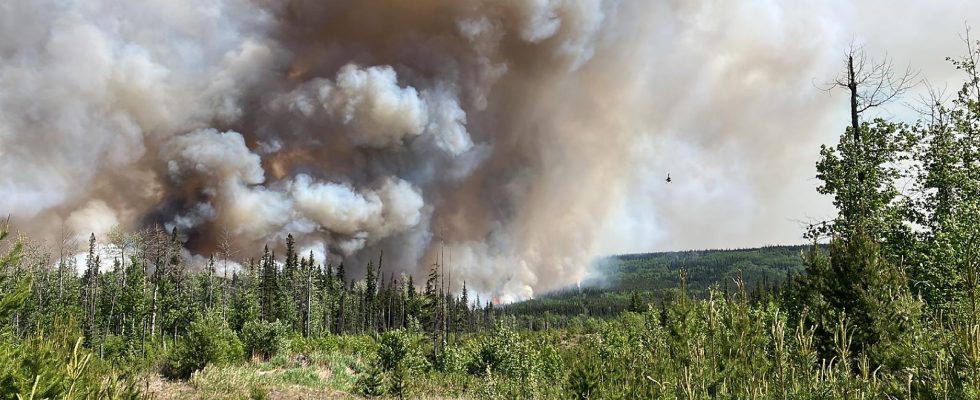The figures are “literally out of the ordinary”, according to the Canadian Ministry of Natural Resources. Canada currently counts 670 wildfires, “while there are still at least three months of active wildfire season”. Among them, 380 are still out of control. For the Canadian government, the summer promises to be “long and difficult”. The weather forecasts for the coming weeks are indeed counting on temperatures above seasonal norms, particularly in western and northern Quebec, the region currently most affected by the fires.
Nine million hectares have already gone up in smoke this year, that is to say eleven times the average of the last decade. The absolute annual record dating from 1989 has already been largely exceeded (7.8 million hectares). Not to mention that the number of fires continues to increase. A total of 677 fires were active in the country on Friday, with 13 new blazes discovered during the day. Both sides of the country are burning at the same time, and areas unaccustomed to fires are also affected. One of the forest fires in northern Quebec alone burned more than a million hectares.
The fires are expected to continue to increase
According to the latest figures from Thursday, 143 fires were still active in Quebec, 109 in Alberta and 100 in British Columbia, including that of Donnie Creek, which grew in size and became the largest in the province with 571 000 hectares ravaged. Not only are the fires larger than usual, but they are also abnormally numerous. “This season has seen 20 per cent more fires than the decade average, and that number is expected to increase in the coming months,” said Michael Norton, executive director of the Service’s Northern Forestry Center. Forestry Canada.
In recent days, many parts of the country have indeed had a glimpse of the intense heat that could arrive in the coming months and encourage the development of blazes, with warnings in Ontario, British Columbia and Quebec. Earlier this week, Kuujjuaq in northern Quebec reached nearly 34°C. “Drought is a significant factor affecting parts of all provinces and territories, and intensifying in some areas, added Michael Norton. Combined with forecasts of temperatures still above normal across most of the country, many parts of Canada can be expected to continue to experience above normal fire activity.”
Some 155,000 people have been forced from their homes at least once since early May due to the fires. This is the highest figure for 40 years. “Evacuations, poor air quality and extreme heat warnings, we are discovering the effects of climate change in all their reality,” lamented Jean-Yves Duclos, the Minister of Health. “It’s the fine particles, those that are very small and not visible to the naked eye, that penetrate deep into our lungs and our bloodstream, that concern us the most in terms of health risks,” said Marie-Eve Héroux. , head of air quality assessment at Health Canada. According to her, the smoke, which made Toronto’s air one of the worst in the world last week, is made up of gases, particles and water vapor that can cause chest pain, coughing and shortness of breath.
International solidarity against megafires
Authorities say more than 17,000 pieces of equipment have been moved between provinces and territories to help fight the fires, but also to facilitate airlift for evacuees. While firefighting efforts typically cost $1 billion a year, this year will likely set a new record, according to Michael Norton. “The total cost of wildfires to the economy and society is a much bigger question,” he said.
This situation has also forced the authorities to call for international assistance at an unprecedented level to support the 3,800 Canadian firefighters on the ground, who are supported by the Canadian Armed Forces. In total, more than 3,000 additional international firefighters – from New Zealand, Chile, Costa Rica, Mexico, Spain and even South Korea – came to lend a hand to the local teams. In recent days, Canada has also signed a forest firefighting assistance agreement with Portugal, similar to the one signed with the United States at the end of June. “The firefighting effort has truly become a global effort,” said Michael Norton.
